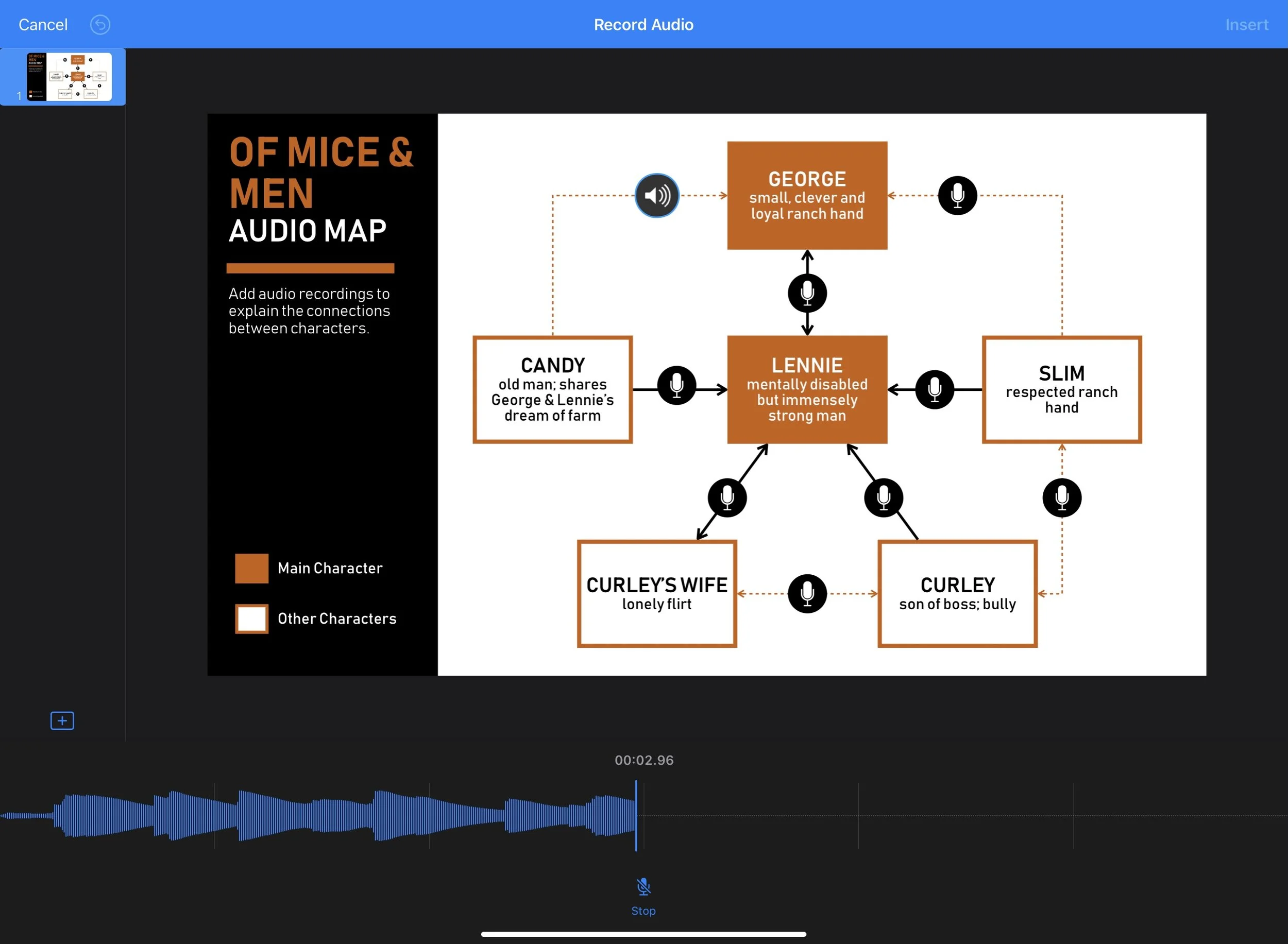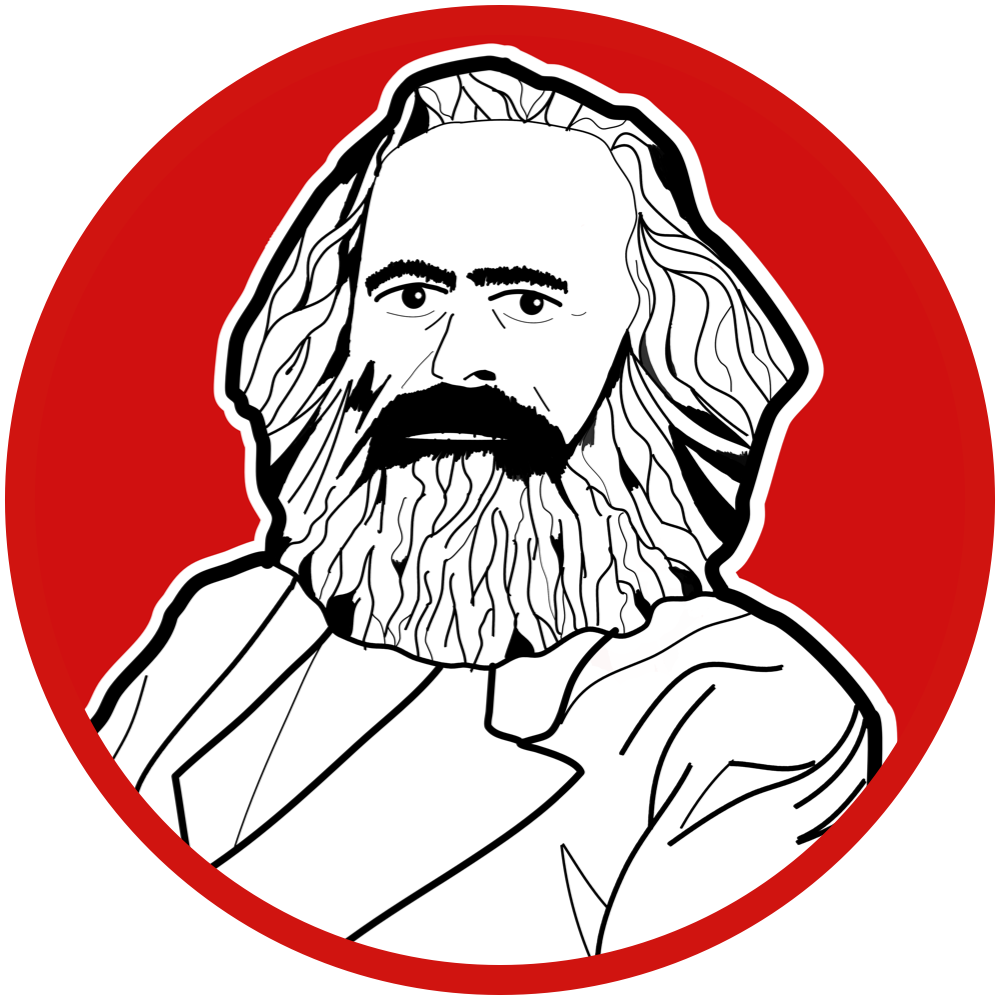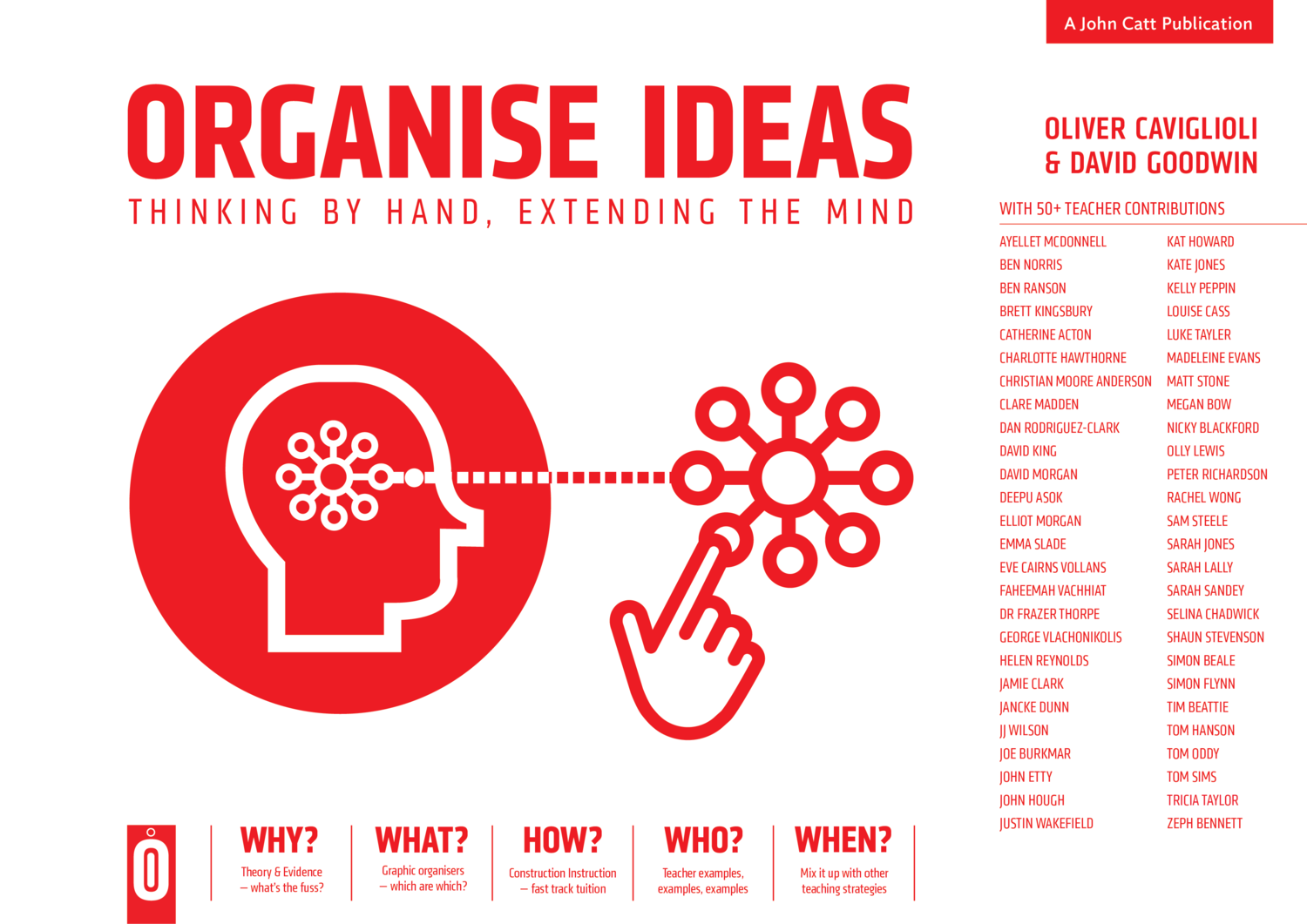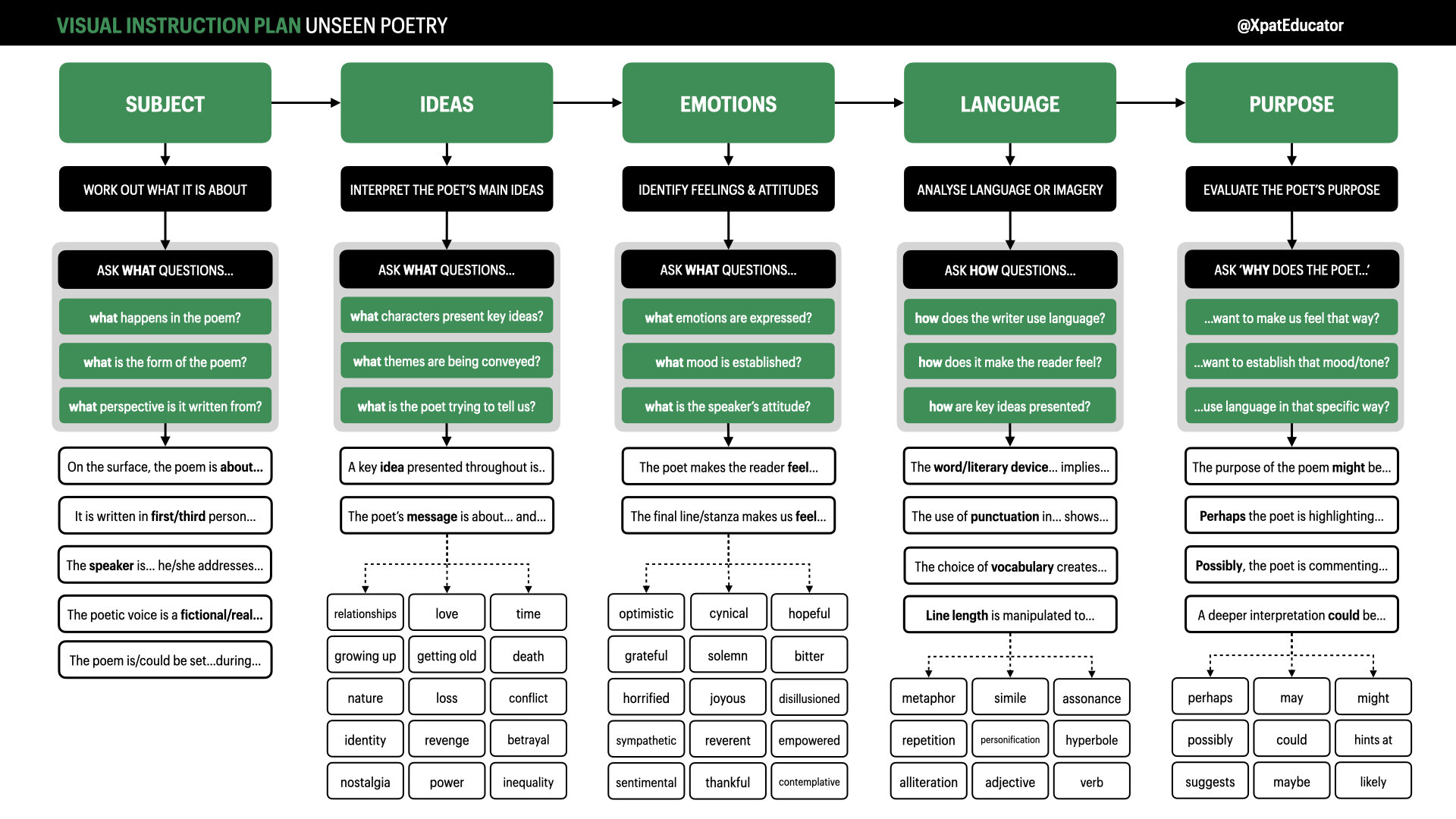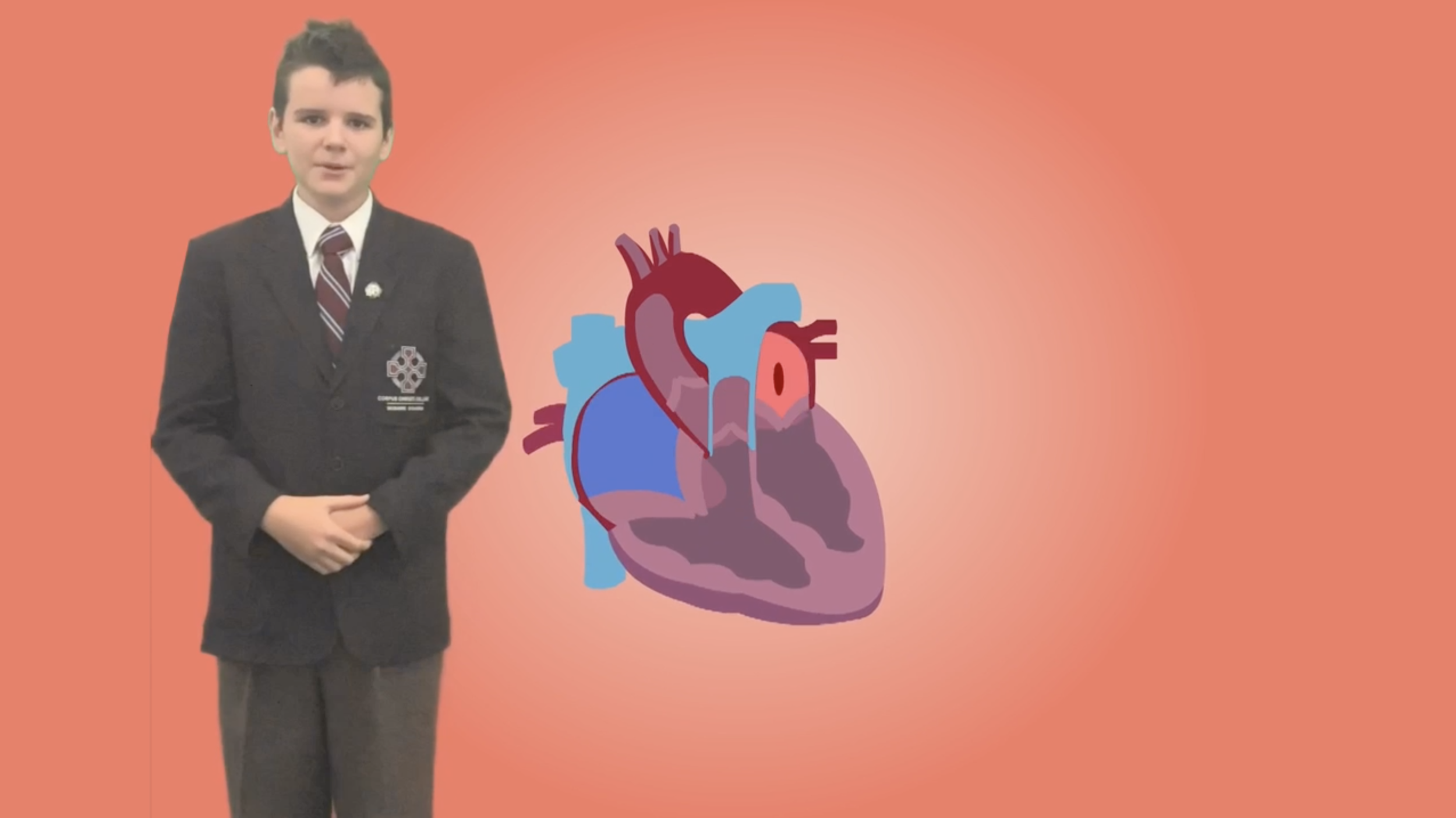Digital Audio Maps: Interactive Word-Diagrams
Technology has empowered my students to demonstrate learning in different ways. In order to revise the relationships between characters and historical context in George Orwell’s allegorical novella ‘Animal Farm’, I created a digital ‘audio map’. This allowed Year 9 students to record verbal explanations linking characters with underlying political ideas about power and oppression.
Illustration by David Goodwin, @MrGoodwin23
How do graphic organisers support your teaching?
Since the early days of my career as an English teacher, designing learning visuals has been part of my teaching practice. I commonly use graphic organisers to scaffold writing, break down information and assist students in making connections between themes, characters and context. Literary texts present a labyrinth of challenging ideas and techniques. By organising those ideas and pairing words with graphics, information becomes more visible so that learning is clear and concrete for students.
In recent years, I have learnt the value of good instructional design. Minimising distracting and unnecessary visuals is critical to ensure the working memory is not overloaded. I encourage thinking by providing my students with simply designed frameworks and partially completed scaffolds. I create concept maps to unpack hierarchies and flow charts to explore sequences and key events in texts.
Jamie’s resource for Year 9 English - illustrations created in Affinity Designer
How has technology changed the way your students learn with graphic organisers?
Technology has empowered my students to demonstrate learning in different ways. In order to revise the relationships between characters and historical context in George Orwell’s allegorical novella ‘Animal Farm’, I created a digital ‘audio map’. This allowed Year 9 students to record verbal explanations linking characters with underlying political ideas about power and oppression in the Russian Revolution.
I designed the map using Apple’s Keynote software so that students could easily capture and insert short audio recordings within the app (Microsoft PowerPoint and the Mote application for Google Slides do a similar job). Adapting the conventional concept map approach, I replaced connecting verbs with big questions such as, ‘How does Boxer’s relationship with Napoleon change [throughout the text]?’. To establish my expectations, I recorded a short example to model the type of vocabulary and form of expression required for success.
This multi-modal graphic organiser worked well as a retrieval exercise, as students used their devices to narrate their understanding from memory without any supporting notes or teacher input. Afterwards, students listened to and checked their responses against their knowledge organisers and workbooks to identify crucial gaps in understanding. Any misconceptions were addressed and re-recorded onto the map.
Digital audio recordings allowed students to provide more elaborative responses and gave me a deeper insight into their understanding. Keeping the focus on pedagogy is a key message when I coach teachers as technology can sometimes be gimmicky if not utilised in a meaningful way. As a result, I created several more audio maps for other key texts in the curriculum.
How has educational research influenced your use of graphic organisers?
Understanding Cognitive Load Theory has allowed me to take into account the cognitive architecture of human memory. I challenged myself to reduce extraneous load and increase intrinsic load within all my learning materials. My graphic organisers chunk and arrange information into containers and paths that show clear relationships. I decrease the volume of words, simplify visual representations and streamline my colour palettes to achieve visual clarity and create powerful learning experiences for students.
Affinity Designer (iPad)
Whilst I use Keynote to create my resources, I realised Affinity Designer on the iPad was a useful app for high-quality illustration. Check out my first attempts!
Organise Ideas: Thinking by Hand, Extending the Mind
Recently, I have had the honour of contributing to Oliver Caviglioli and David Goodwin’s book ‘Graphic Organisers: Thinking by Hand, Extending the Mind’. The experience opened my eyes to ways in which graphic organisers — or more specifically, word-diagrams — can help students capture transient information and support learning. This book has inspired my recent work on audio maps - you can purchase Oliver and David’s book on Amazon now. I highly recommend it!
Visual Instruction Plans: Word-diagrams to Support Writing
A Visual Instruction Plan (VIP) is a set of visual prompts that provide a clear step-by-step outline of what students have to do to complete a procedure or process. They are much like the instructions you receive with IKEA flat-pack furniture — they have limited words, use diagrams and have simple steps to follow. Learn how they can be used in class to support students with analytical writing.
For some students, analytical writing does not come naturally. In fact, the process of analysing language and unearthing layers of meaning presents a formidable challenge.
To write a successful analysis, students have to interpret a range of complex information whilst ensuring their writing is well-structured, uses academic vocabulary, and builds-on ideas throughout. If there is too much information for students to process at any given time, the working memory can be overloaded and learning can be lost.
Recently, I have had the honour of contributing to Oliver Caviglioli and David Goodwin’s upcoming book ‘Graphic Organisers: Thinking by Hand, Extending the Mind’. The experience opened my eyes to ways in which graphic organisers — or more specifically, Visual Instruction Plans (VIPs) — can help students capture transient information and support them throughout the writing process.
Thanks to Oliver and David, VIPs have become part of my practice when teaching writing in English. Having a clear organisational structure for students to follow has helped students develop more independence and improved the overall quality of their analytical writing.
Oliver and David’s book will be released in Summer 2021 and features over 50 teacher contributors from all over the world.
What is a VIP?
A Visual Instruction Plan (VIP) is a set of visual prompts that provide a clear step-by-step outline of what students have to do to complete a procedure or process. They are much like the instructions you receive with IKEA flat-pack furniture — they have limited words, use diagrams and have simple steps to follow.
Concept map explaining the Visual Instruction Plan (VIP)
The term, Visual Instruction Plan was introduced by Dr. Fred Jones in his article, Weaning the Helpless Handraisers, Part 2: Teaching To The Visual Modality where he writes about the limitations of verbal prompts and traditional graphics. Jones considers the VIP like “a string of visual prompts that a student can refer to at will… [it] guides performance just as you would if you were tutoring the student.” The idea is that students refer to the VIP as needed and, when it is no longer required, they stop referring to it. Jones believes that this helps “the student become more independent” over time.
The YouTube video shows Dr. Fred Jones in action using a live VIP to break down a mathematics concept.
How can VIPs support writing?
During analytical writing practice, I have found word-only VIPs to be transformational in helping externalise the process. Using flow-spray graphic organisers has been effective in showing students how to sequence ideas. The map supports students by freeing up the working memory so that they can focus on thinking more deeply and elaborate on their analysis. The VIP serves as an advanced visual scaffold - like all scaffolding, it needs to be taken down over time so that students do not become reliant on it.
This example flow-spray VIP is was used successfully with my Year 10 class when writing analytical paragraphs on ‘Romeo and Juliet’.
What makes a good VIP?
Flow-spray VIPs are made up of boxes that organise information horizontally or vertically on the page or slide. Normally, I avoid overcomplicating the design by sticking to three predominate coloured containers:
Colour Major step or concept
Black Concise teacher instruction
Blank Sentence starters/key vocabulary
What, How & Why Questions
To encourage students to think about texts in more detail, I regularly integrate ‘what’, ‘how’ and ‘why’ questions under each heading. This method of analysis was first introduced by English teacher Becky Woods and works brilliantly in assisting students with unpacking and inferring key ideas. Example ‘WHW’ questions include:
‘What is the writer trying to tell us?’
‘How does it make the reader feel?’
‘Why does the writer use language in this specific way?’
Sentence Starters & Prompts
Attaching sentence starters to the map assist students in achieving a more sophisticated and academic style of writing. It is important that sentences starters are left as open as possible to avoid leading students to a specific response or idea - for many students, this is critical to their success when developing ways to express their understanding. Breaking down key vocabulary into smaller containers also provides useful visual prompts to generate thinking and connect ideas to prior learning.
The examples below, show supporting VIPs for quotation analysis, essay writing and deconstructing unseen poetry.
How do you use them in class?
Visual Instruction Plans can be introduced into your lessons at any stage in the learning journey — both as a teaching tool or for independent study. Here are some suggested steps on how a VIP can be integrated into a conventional lesson sequence:
Select the type of writing you want students to produce and break it down into manageable step-by-step instructions on a flow-spray map.
Integrate sentence starters & questions below the headings, to support students’ writing.
Introduce and explain the map to students section-by-section to avoid cognitive overload and then distribute hard copies.
Live model the writing process using the graphic organiser as a guide.
As students develop their knowledge of the writing process, gradually remove the VIP and encourage independent practice.
How do I create my own VIP?
VIPs can be created in Microsoft PowerPoint, Google Slides or Apple’s Keynote software. You can use shapes/containers, arrows and text to create basic word diagrams.
If you'd like a starting point in creating your own Visual Instruction Plan, you can download my existing examples to adapt to your own subject. Please credit me if you decide to share your work on social media.
The Science of Learning: Top Five Tech Tools
In recent years more and more educators are engaging with evidence from cognitive psychology and introducing research based practices to support teaching and learning. Here are my top five tools and apps that support research from cognitive science.
In recent years more and more educators are engaging with evidence from cognitive psychology and introducing research based practices to support teaching and learning. For one, the movement towards research based pedagogy has inspired me, and transformed many aspects of my day-to-day teaching . As Director of Digital Integration at a Catholic private school, the recent revolution has left me questioning how technology can be used in meaningful ways to support key research on the science of learning.
After reading Daisy Christodoulou’s book, Teachers vs Tech? The case for an ed tech revolution, it is clear that technology has the potential to be a powerful educational tool providing it is used to inform teaching and support independent study. Of the many points made by Christodoulou, here are three main takeaways which resonated with me:
Well designed content and explanations can be supported by frequent end of unit quizzes and in-video questions to check understanding.
Students are not experts and therefore cannot independently identify the steps to take to improve. Adaptive technologies can assist in quizzing students in order to identify weaknesses, and subsequently generate targeted questions to personalise testing.
It is important to reduce students’ cognitive load by closely integrating text and images together. Removing irrelevant information gives students more space in the working memory.
I personally believe technology has a more balanced role to play in giving students innovative ways to demonstrate learning. Nevertheless, I certainly value Christodoulou’s argument that securing background knowledge is key before students can pursue more creative project based tasks.
So without further ado, here are my top five tools and apps that support this research:
1. Quizizz
Quizizz is a low-stakes formative assessment tool that allows you to create (and find pre-made) quizzes. This app lets you check results to inform your teaching and provides options to download and save data. It is beneficial for students to make a revision timetable to help schedule quizzes on a range of topics on a regular basis. Quizizz also allows you to create or assign ‘Homework’ quizzes to students so that they do not have to do it live in class. The digital gamification of quizzing can make learning fun and add an element of competition.
Cost Free

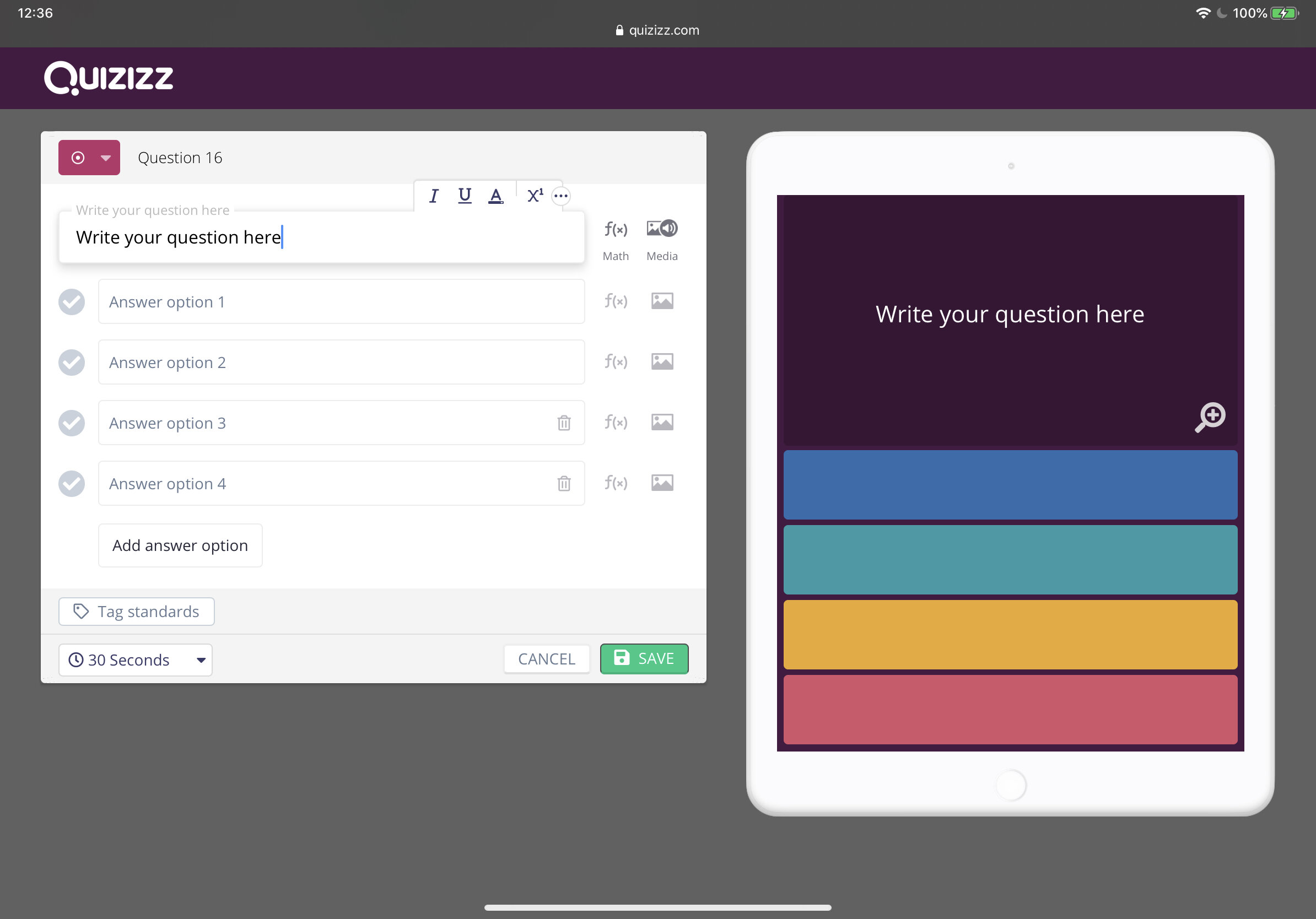
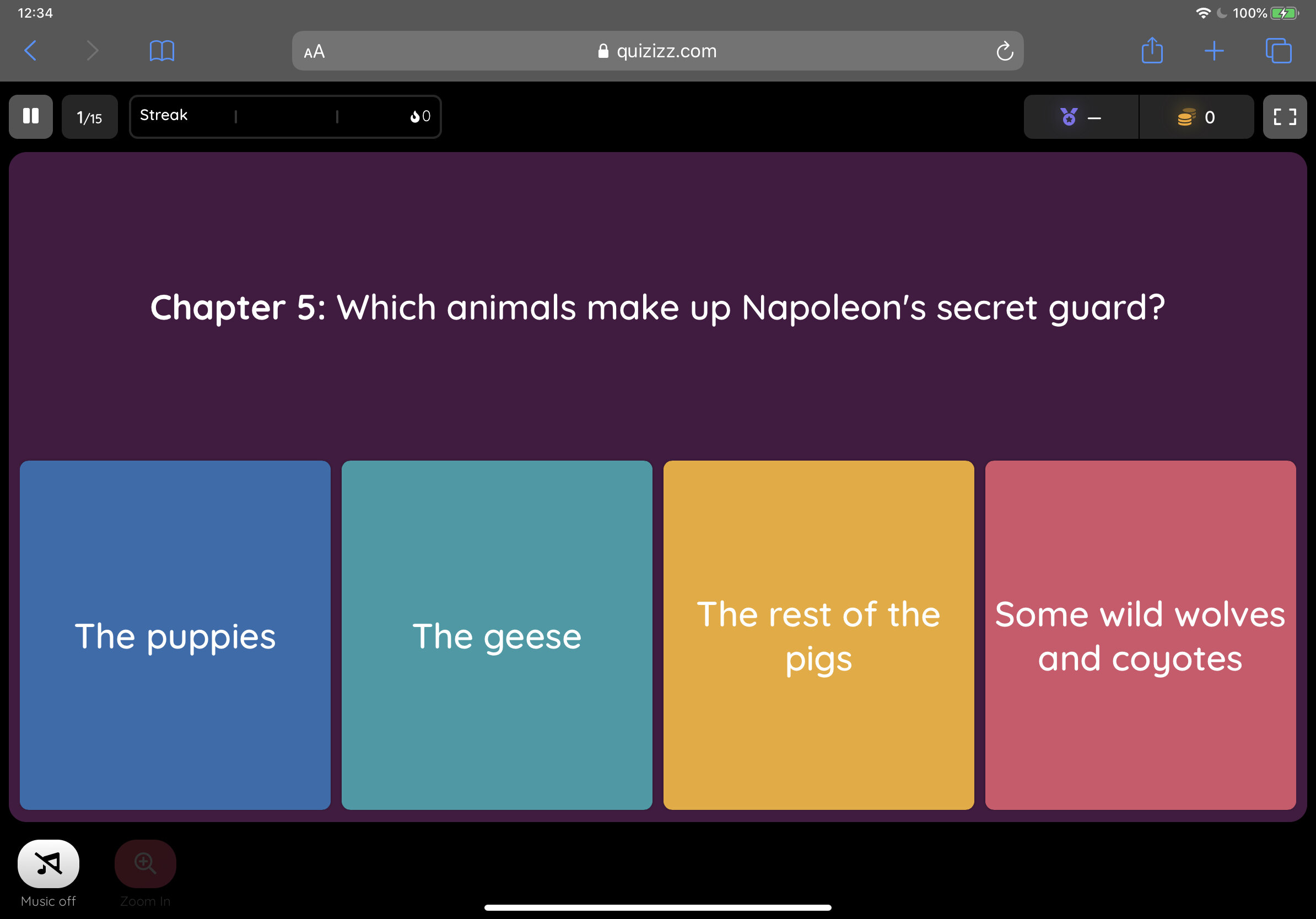
2. Edpuzzle
Edpuzzle is one of my favourite educational apps. It allows you to embed multiple choice questions, open-ended questions, notes and even your own voice into videos. You can use videos from YouTube, Khan Academy, Crash Course and more. If you'd rather record and upload your own video, you can do that too. I tend to add questions to selected short YouTube videos to test students’ knowledge like in the example below. It’s a fantastic and engaging way to check students’ understanding. Check out this example.
Cost Free (paid features are available)

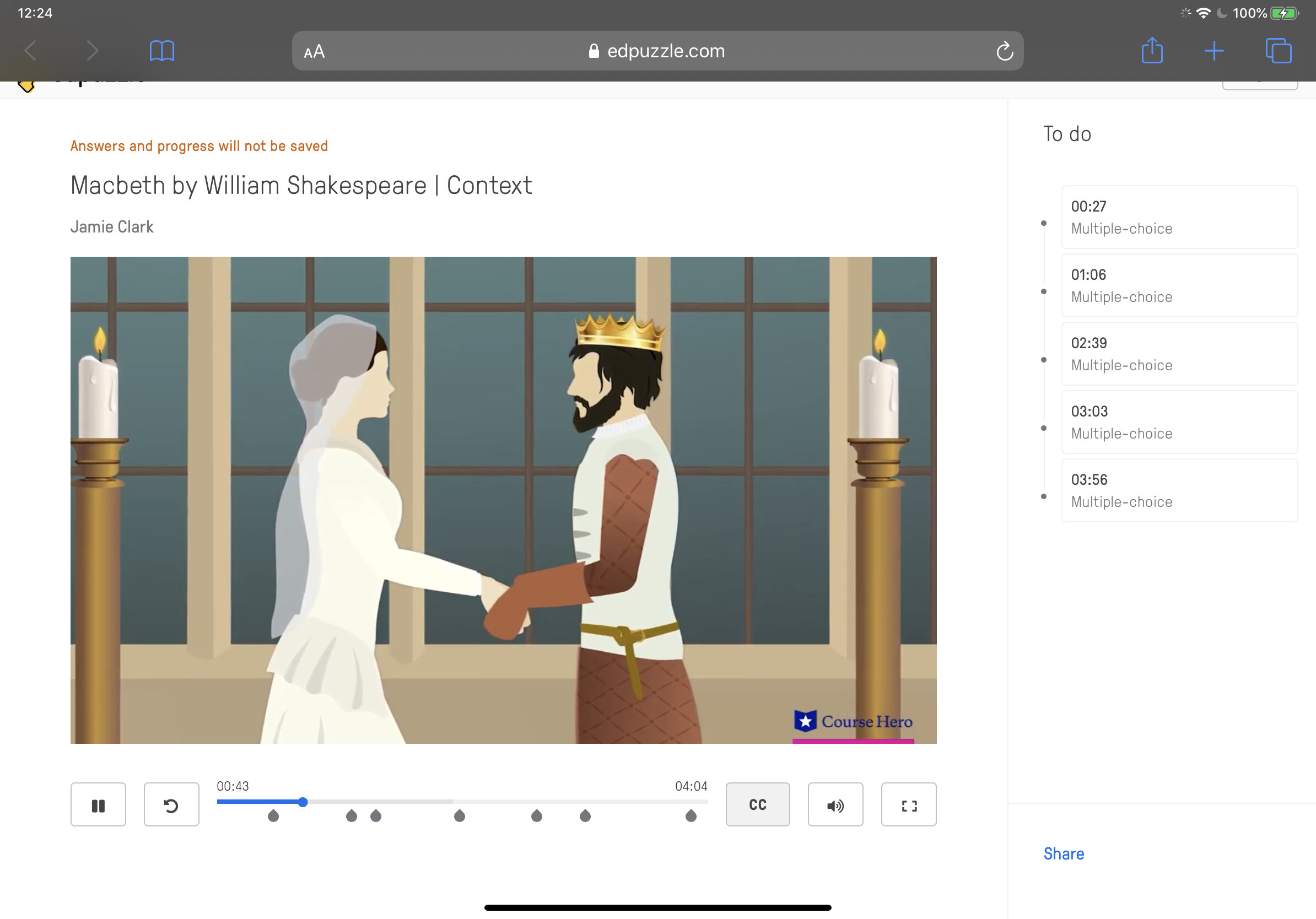
3. Quizlet
Quizlet is a digital flashcard app that allows users to create free study sets which assist in learning key ideas and concepts. Research in cognitive psychology has shown that using flashcards can help students memorise information more readily (as opposed to simply reading over notes). Quizlet includes other effective features such as ‘Match’ and ‘Learn’ comprehension features. Upgrade to the paid ‘Teacher’ account to allow the integration of images to your cards.
Cost Free (paid features available)

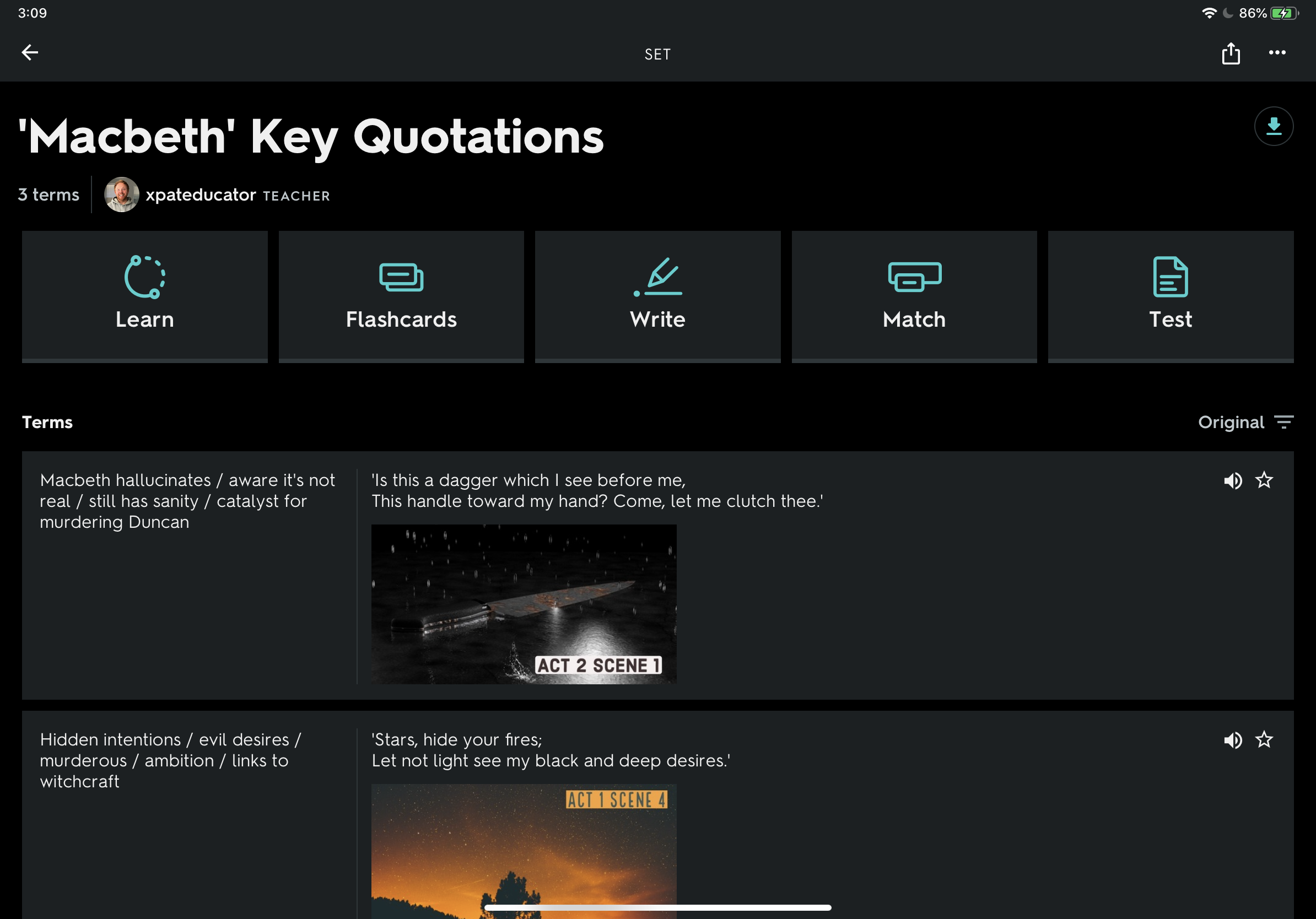

4. Green Screen (iMovie)
Providing you have the right equipment, you can create powerful videos using green screen to support learning. By cropping out irrelevant information, you reduce the load on the working memory. At my school, Year 8 Science students used pop-up green screens to explain how the heart works. Students used iMovie to layer the animation with the footage of themselves reading their explanations. This is also a powerful way for teachers to deliver content.
Cost Free (iPadOS and macOS only)
Student example of a green screen used to explain how the heart works.
5. Education Perfect
If you school has the resources then Education Perfect is an effective and powerful adaptive learning tool. You can check students’ progress in real time and the software automatically generates extension or support activities based on student performance. Spaced repetition and gamification enhance knowledge acquisition and retention over time and the hundreds of Smart Lessons support learning with scaffolding, engaging images and videos. Fantastic for independent study.
Cost Subscription Model
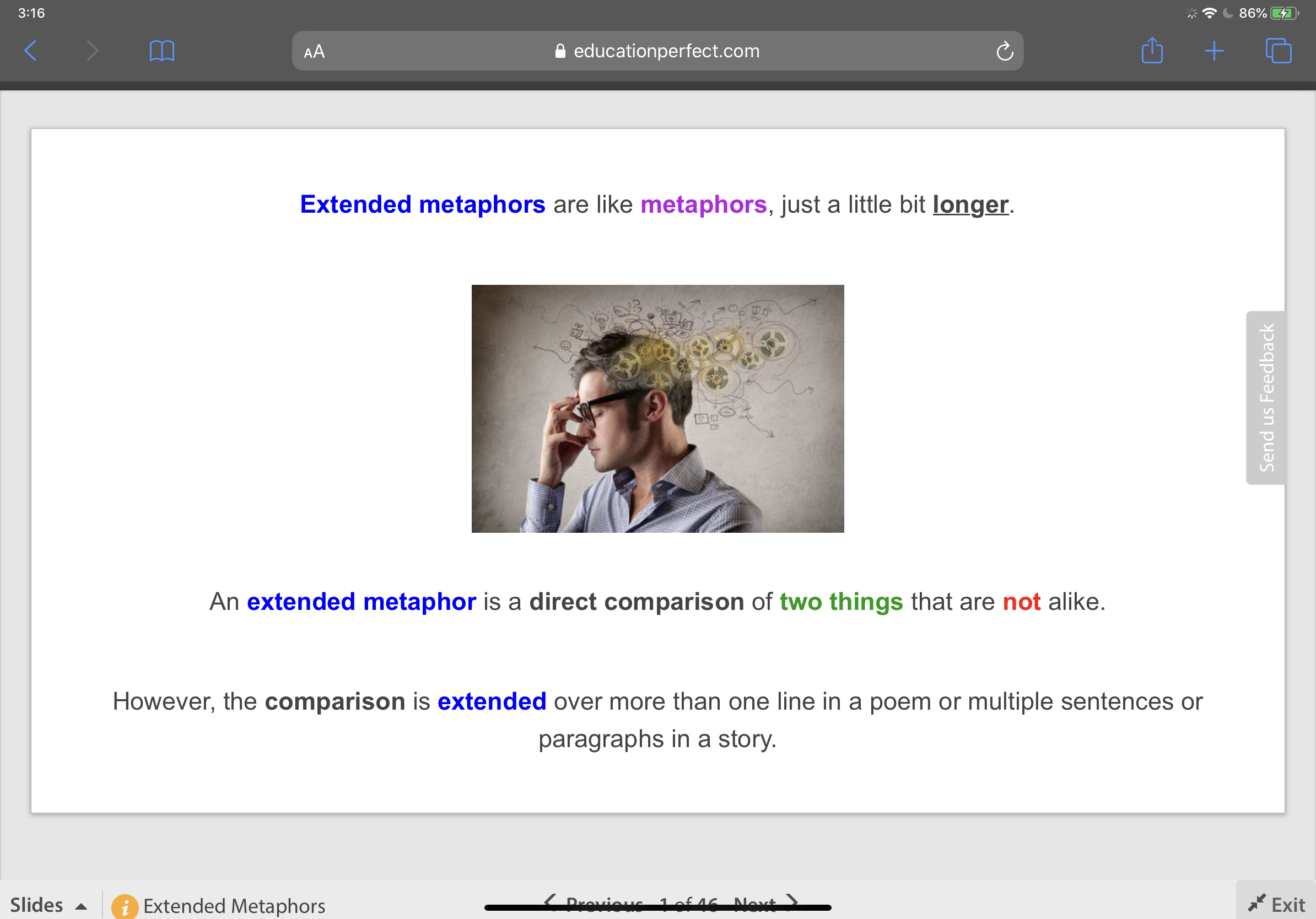
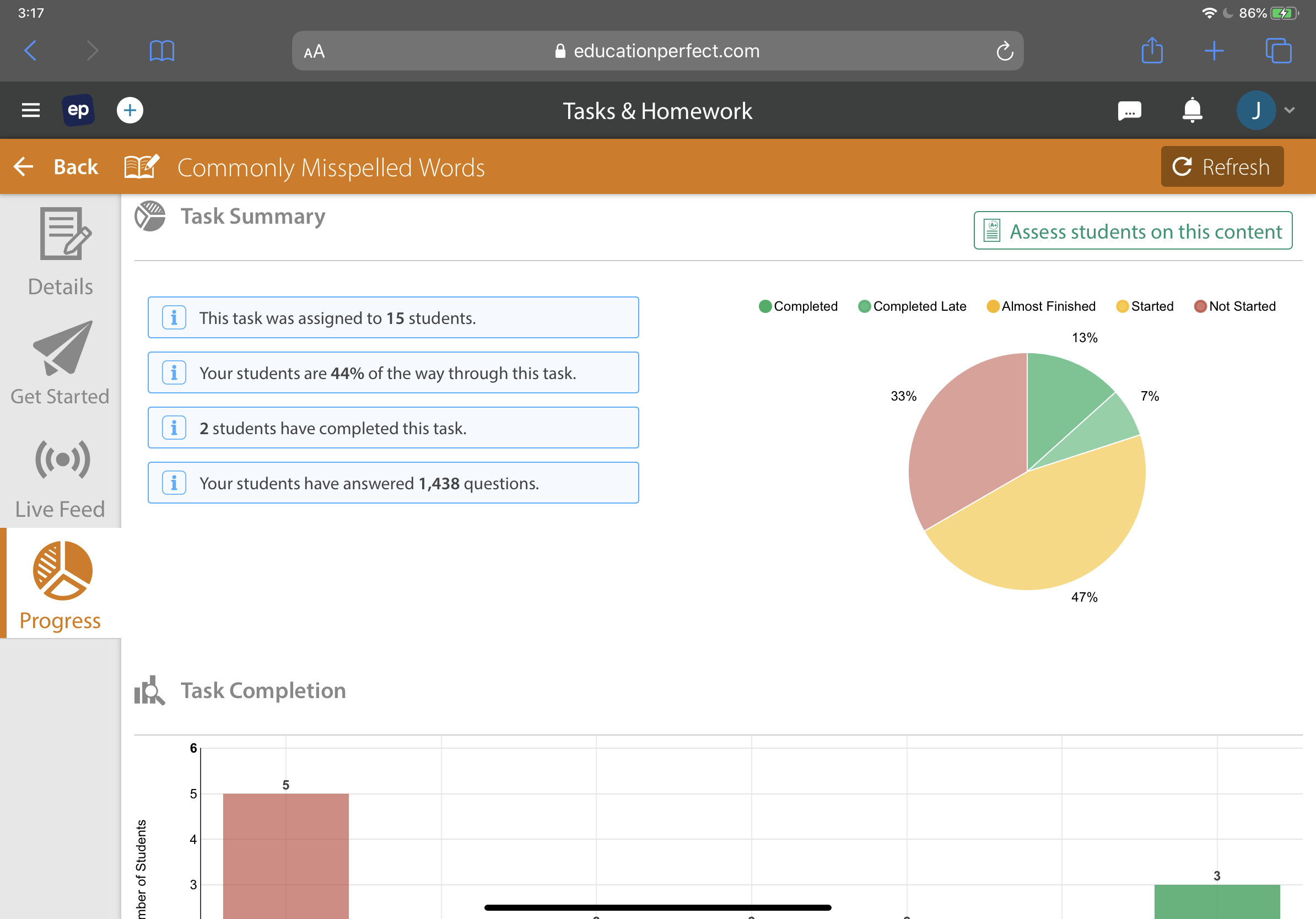

Episode 10: Retrieval Practice Pooja K. Agarwal, Ph.D.
In this exciting episode of The Staffroom, we spoke about retrieval practice with Pooja K. Agarwal, Ph.D. (@PoojaAgarwal) an expert in the field of cognitive science. Pooja is the Founder of RetrievalPractice.org, a hub of research, resources, and teaching strategies based on the science of learning. Listen for her practical tips and ideas on the most powerful learning strategy - retrieval practice!
The Staffroom Show Notes
In this exciting episode of 'The Staffroom', we spoke about retrieval practicewith Pooja K. Agarwal, Ph.D. (@PoojaAgarwal) an expert in the field of cognitive science. Pooja is the Founder of RetrievalPractice.org, a hub of research, resources, and teaching strategies based on the science of learning – check this out!
Pooja’s work is being noticed more and more by teachers around the world as she offers practical tips and advice on cognitive psychological research and strategies can enhance and accelerate student learning.
Here’s our conversation with Pooja broken down with time-stamps:
Who is Pooja and how did she get involved with cognitive science? (3:35)
How does Pooja define retrieval practiceand why is it a powerful strategy for learning? (5:50)
What examples does Pooja use to illustrate retrieval practicein the classroom? (7:50)
Does Pooja think that it is difficult to engage students in retrieval practicestrategies? Why does she think it is important to keep retrieval practiceas a low or no-stakes approach? (9:40)
Does Pooja believe retrieval practiceworks better with older or younger students? (11:45)
How can educators implement retrieval practiceinto their teaching? What techniques does Pooja suggest are most effective? (13:20)
Why does Pooja believe that feedback is an important part in retrieval practiceprocess? (16:50)
Does Pooja think that there are any potential challenges for teachers when implementing retrieval practice? Does she believe it impacts on workload? (19:50)
What is Pooja’s upcoming book called and what’s it about? (22:15)
We hope you enjoy this episode of The Staffroom and found Pooja’s ideas on retrieval practice strategies as fascinating as we did. We gathered lots of practical tips and tricks on how to work smarter not harder – remember: retrieval practice is one of the most powerful strategies to use in your classroom – why not give it a go?
We wish Dr Pooja K. Agarwal all the best for 2018 and her continuing success of RetrievalPractice.org. Remember to buy her book once it’s released in June next year!
Until next time!
Jamie, Michael and Tessa
Twitter:
Episode 9: The Science of Sketch-noting Oliver Caviglioli
In this episode, we were lucky enough to speak to Oliver Caviglioli about the power of learning visuals and its basis in cognitive psychology. Oliver (@olicav) is an information designer who is widely known as an expert in visualising educational concepts. In recent years, he has worked with lots of different teacher-authors in illustrating their books.
The Staffroom Show Notes
‘The Staffroom’ is back! In the first episode of Series 2, we were lucky enough to speak to Oliver Caviglioli about the power of learning visuals and its basis in cognitive psychology. Oliver (@olicav) is an information designer who is widely known as an expert in visualising educational concepts. In recent years, he has worked with lots of different teacher-authors in illustrating their books.
Our chat with Oliver gave us some real insight into the use of visuals (such as sketch-noting) to conceptualise, categorise and organise information to enhance learning.
Here’s a break-down of our chat complete with time-stamps:
How did Oliver’s background and interest in ‘behaviourism’ influence his work as an information designer? (4:04)
Why does Oliver believe his visuals are becoming more and more popular with educators around the world? (6:07)
Why does Oliver think sketch-noting should not be ‘artistic’ and individualised? Why does he believe it is important to keep it simple? (8:30)
Why does Oliver think that all teachers should know about cognitive psychology? (10:09)
Why does Oliver believe it is important for teachers to use a balance of cognitive psychological research and educational research? (12:15)
What is ‘precis’ and why is it an important way of learning? Why does Oliver think that summarising/sketch-noting is an effective method of learning? (12:49)
Who is Ruth Colvin Clark and what does she say about decorative visuals and explanatory visuals? (14:29)
What is the main tip Oliver gives to people who want advice about their sketch-notes? (16:08)
How does Oliver think teachers should practice sketch-noting effectively with students? (16:50)
Is Oliver an advocate of technology to support and accelerate learning? (20:20)
If Oliver could recommend one professional learning book to a new teacher, what would it be and why? (20:35)
Where can people find Oliver’s work online? Where are his books available to buy? (24:01)
If you’d like further information about Oliver, you can check-out his work with Dr Megan Sumeracki (@DrSumeracki) and Dr Yana Weinstein who are the creators of The Learning Scientists project. Their book is called ‘Understanding How We Learn: A Visual Guide’ – check this out now! Also, if you're interested in our colleagues' Apple book on 'The Science of Sketch'-noting, take a look at Jamie Clark and Daniel Budd's digital book here.
We hope you enjoy this episode of The Staffroom and found Oliver’s words as fascinating as we did. We can’t wait to make sketch-noting and informational design part of our practice!
Until next time!
Jamie, Michael and Tessa
Twitter:









